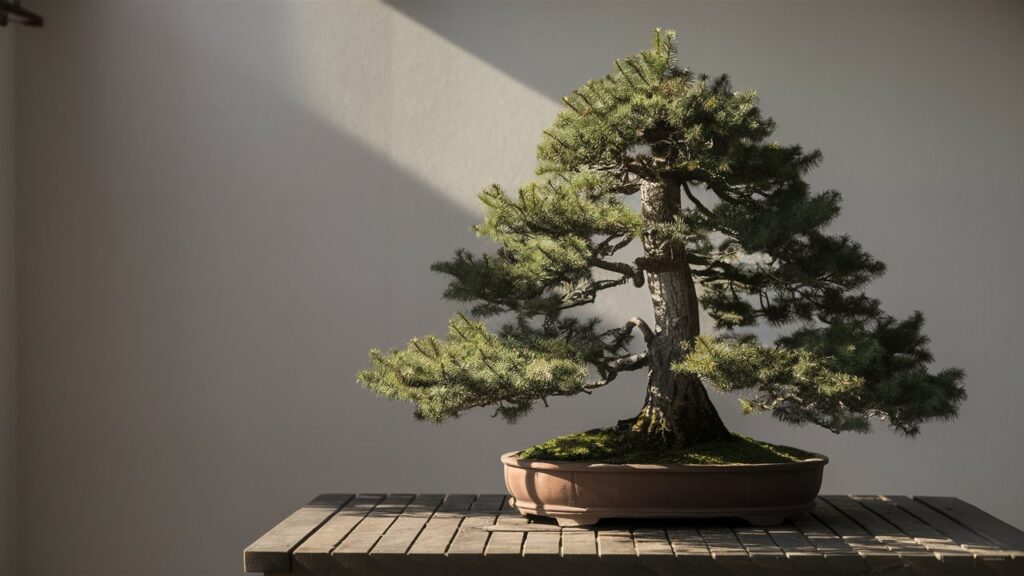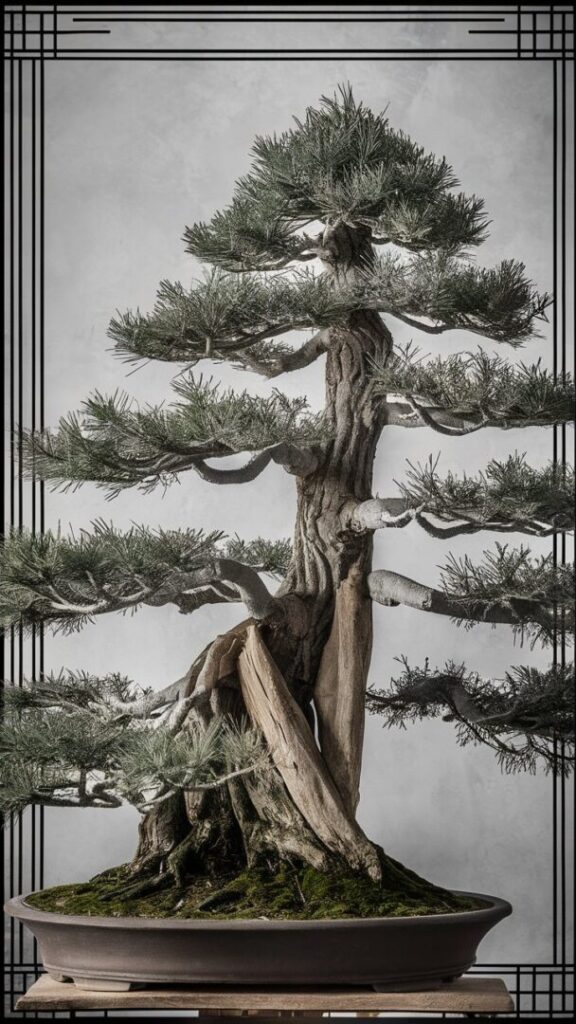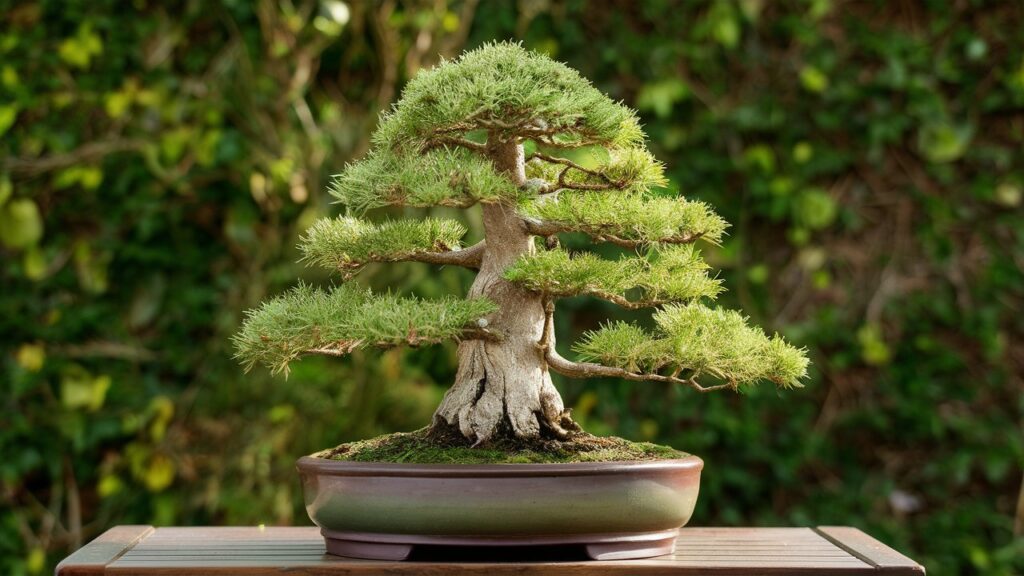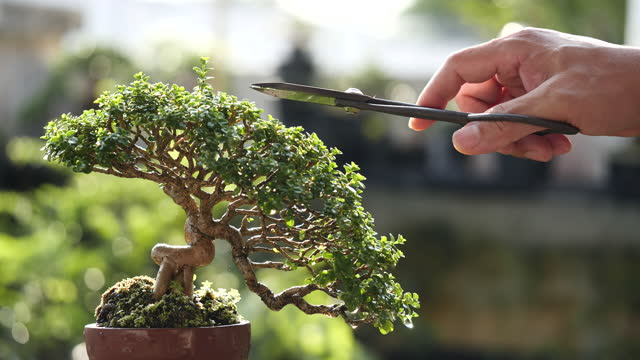The Picea abies bonsai or Norway Spruce is a popular bonsai choice, known for its elegant branches and dense foliage. This slow-growing conifer is adaptable to various conditions and can develop intricate shapes and textures over time. This guide covers the essentials of growing and caring for Picea abies bonsai, from light and temperature requirements to watering and styling techniques.
Light and Temperature Requirements
Picea abies, or Norway spruce, is a full sun species that thrives best when it receives at least six hours of direct sunlight each day. While it can tolerate partial shade, growth may become sparse and less vigorous under these conditions. This bonsai species flourishes in cool climates, ideally preferring temperatures between 50°F and 75°F (10°C to 24°C). It is important to avoid hot, humid conditions, as these can stress the tree and lead to poor health.
During the winter months, Picea abies bonsai should be protected from frost and freezing winds, which can damage its delicate foliage. In summer, providing some shade during the hottest part of the day can help prevent needle scorch, especially in regions with intense sunlight. If you live in a particularly cold climate, consider growing your Picea abies bonsai indoors during the winter to maintain optimal conditions for growth and health.
Watering and Humidity

Proper watering and humidity management are crucial for the health of your Picea abies bonsai. The soil should be kept consistently moist but not waterlogged; overwatering can lead to root rot and other issues. A good rule of thumb is to water your bonsai when the top inch of soil feels dry to the touch. You can use the finger test to check soil moisture easily.
Picea abies thrives in high humidity levels, ideally between 50% and 70%. To enhance humidity, mist the foliage regularly, especially during dry seasons. If the air in your home is particularly dry, consider using a pebble tray filled with water beneath the bonsai pot or a humidifier to maintain adequate moisture levels. However, be cautious not to let the soil remain soggy for extended periods, as this can harm the roots. In winter, when growth slows, reduce your watering frequency to prevent over-saturation and promote healthy root development.
Soil and Repotting
Picea abies bonsai thrive in a fast-draining, acidic soil mix specifically formulated for bonsai. An ideal soil composition consists of 30% akadama (a type of clay), 30% pumice, and 30% lava rock. You can also add extra drainage material, such as scoria or perlite, to further improve soil aeration and prevent waterlogging.
Repotting your Picea abies bonsai is essential for maintaining its health and promoting growth. This should be done in early spring every two to three years. Carefully remove the tree from its pot and gently remove old soil from the roots. Prune off approximately one-third to one-half of the root mass to encourage new growth and prevent the roots from becoming pot-bound. If needed, repot your Picea abies into a slightly larger container, ensuring that the pot has adequate drainage holes and a proper drainage system.
After repotting, water your bonsai thoroughly and keep the soil consistently moist until new growth appears. This will help the roots establish themselves in the new soil and promote the overall health of your Picea abies bonsai.
Fertilizing
To ensure optimal growth and health, feed your Picea abies bonsai with a balanced liquid fertilizer every two weeks during the growing season. Use a fertilizer with a 10-10-10 or 20-20-20 NPK ratio, which provides a well-rounded blend of nitrogen, phosphorus, and potassium. During the winter months, when growth slows, reduce your fertilizing schedule to once a month.
Supplement your Picea abies bonsai’s diet with an iron chelate fertilizer monthly to prevent chlorosis (yellowing of needles) and promote vibrant green foliage. However, be cautious not to over-fertilize, as this can lead to leggy growth and an imbalance in the tree’s nutrient uptake. To prevent salt buildup in the soil, flush the substrate with water every few months.
Pruning and Wiring
Pruning your Picea abies bonsai is best done in spring and summer when the tree is actively growing. Begin by removing any dead or damaged branches and needles, then pinch back new growth to maintain compact foliage pads. When pruning, aim to leave 2-3 needle sets on each branch to encourage backbudding and ramification.
Wiring is an essential technique for shaping and styling your Picea abies bonsai. The ideal time to wire is in spring or fall when the tree is not under stress from extreme temperatures. Use annealed copper or aluminum wire and wrap it around the branches in opposite directions to create movement and shape. Avoid wiring during hot summer months, as the branches may be more brittle and prone to damage.
After 6-12 months, or when the wire begins to cut into the bark, carefully remove it. Prune off any new growth that emerges over the wire to maintain the desired shape and prevent scarring. With proper pruning and wiring techniques, you can create stunning Picea abies bonsai with intricate branch structures and beautiful foliage pads.
Pests and Diseases
Picea abies bonsai can be susceptible to various pests, including aphids, spider mites, and scale insects. To manage these pests, treat your bonsai with insecticidal soap or neem oil, which are effective and environmentally friendly options. Additionally, watch for fungal diseases such as needle cast, often caused by overwatering or poor air circulation. If you notice signs of fungal infection, apply a fungicide and improve growing conditions to enhance airflow around the tree.
To prevent disease, avoid overhead watering, which can create a damp environment conducive to fungal growth. Regularly inspect your bonsai and prune off any dead or damaged branches to maintain its health and vigor. By staying vigilant and proactive, you can protect your Picea abies bonsai from pests and diseases, ensuring its long-term beauty and vitality.
Styling and Techniques

Picea abies bonsai can be styled in various ways, including formal and informal upright styles, which showcase the tree’s natural growth habit. Cascade and semi-cascade styles also work well, creating a graceful, waterfall-like appearance. For older trees, the broom style is a popular choice, featuring a rounded, dense canopy.
As your Picea abies bonsai matures, you can create shari (exposed deadwood), jin (deadwood branches), and uro (hollows) to add depth and character to the design. New trees can be grown from seed, cuttings, or nursery stock, allowing you to develop the tree’s ramification and taper over many years.
Remember, Picea abies is a slow-growing species, so patience and dedication are essential when styling and training your bonsai. With proper care and attention, you can create stunning, long-lasting Picea abies bonsai that showcase the natural beauty of this remarkable species.
Conclusion
In summary, caring for Picea abies bonsai involves understanding its light and temperature needs, maintaining proper watering and humidity, using the right soil mix, and implementing effective pruning and wiring techniques. By managing pests and diseases and applying thoughtful styling methods, you can cultivate a beautiful and resilient bonsai. The rewards of growing Picea abies are immense, as this species offers stunning aesthetics and a fulfilling gardening experience.



